by Ellen Klicka, AMS Policy Program
Superstorm Sandy was a reminder that the best time for severe weather preparedness is before hazards strike. Unfortunately, it also made clear that many people still lack sufficient know-how to take measures against potential loss of life and property from natural hazards.
Where to get that know-how? From their kids!
At least, that’s the solution developed in a new online gaming initiative—the Young Meteorologist Program (YMP)—launched during the height of this week’s storm. Children can be passionate about issues that concern them and can be effective at mobilizing the whole family and ultimately the community. Thus YMP stands out from other preparedness initiatives by recognizing children as the gateway to educating families, neighbors, and friends.
YMP is an educational collaboration between the AMS Policy Program, PLAN!T NOW (a non-profit organization that assists communities at risk of disasters), the National Weather Service, and, eventually, children across the nation. PLAN!T NOW asked AMS to help create this free online resource and computer game about severe-weather science and safety. In 2010, AMS Policy Program staff connected PLAN!T NOW to disaster preparedness and response leaders.
NOAA contributed considerable knowledge and support for the Young Meteorologist Program and other PLAN!T NOW initiatives. The AMS Policy Program and NOAA advised PLAN!T NOW on such topics as storm classification, tornado development, flooding and storm surges. The National Education Association also assisted to ensure the educational quality of the program. The diverse team of experts involved in YMP includes educators, scientists, entertainers and software developers, all working towards the common goal of creating disaster resilient communities across America.
The joint effort culminated in YMP’s public launch on October 29, as the Eastern seaboard began to feel Sandy’s impact. The AMS Education Program has assisted in promoting the program’s availability by reaching out to its network of K-12 science teachers. YMP will be a part of classrooms, museums, libraries, major city expos and events all over the country, reaching tens of thousands of children and adults.
YMP also brings Owlie Skywarn – a trademarked character of NOAA, revised and updated by PLAN!T NOW – into the 21st century by making him a central character in an interactive environment online—no longer limited to printed brochures. YMP game designers began with educational material from a NOAA booklet featuring Owlie; he and a host of other animated characters help each child become a junior data collector for the game’s “Weather Center.” Game modules cover hurricanes, lightning, floods, tornadoes, and winter storms. Each game is created in full, interactive animation.
Students who complete the online program earn a Young Meteorologist Certificate. Empowered by this recognition of their knowledge and effort, they are more likely to encourage parents and others to make assemble disaster kits, write emergency plans, and overall make preparedness a priority. The kids are invited to put their new knowledge to work through hands-on activities and community service projects highlighted on the program’s website. Resources for educators, parents and meteorologists to give further guidance to the Young Meteorologists are also available there.
Attendees at the upcoming AMS Annual Meeting in Austin, Texas, can learn more about YMP from the expert’s perspective–NOAA’s Ron Gird and colleagues will present a poster at the Education Symposium (2:30-4 p.m.; 7 January 2013). Dan Pisut of NOAA’s Visualization Lab spoke to the AMS Broadcast Conference about YMP this past August, and that presentation can be heard on our meetings archive.
Future versions of YMP may include new modules on fires and tsunamis, in addition to the five modules in the current game. Other scientific disciplines, such as oceanography and climatology could serve as the basis for programs similar to YMP down the road.
Prepared communities start with prepared households. AMS and its partners are recognizing that those households might become prepared because of knowledgeable children.
 Jeff
Jeff
A Chat with the Iceman

By Maureen Moses, AMS Education Program
I hope you all had a good Earth Science Week last week! The theme was “Careers in the Earth Sciences,” and the AMS Education Program participated in a twitter chat with NASA Polar Scientist Thorsten Markus, who admits that as a high schooler in Germany science wasn’t his passion, but becoming a musician was. Now head of NASA Goddard’s Cryospheric Science Lab, Dr. Markus makes measurements of ice thickness in Antarctica.
Chat participants included a whole classroom full of eighth graders. Dr. Markus had plenty of advice on how a future polar scientist with an adventuresome streak can make a splash in a cool field! Here are some of the questions he fielded–edited and excerpted from the full chat archived on Twitter:
I’m here with 25 8th grade Earth Science students and one student would like to know what the day to day duties are as a polar scientist.
It’s extremely playful — playing with lots and lots of satellite data and learning something new every day.
Do you get to travel to cool places or are you processing data in an office?
Oh man, yes. I used to go to the Arctic and Antarctic and also flew over them in helicopters and planes.
What was your favorite experience in the field as a scientist?
Seeing the penguins coming out of the water and then standing right next to us. Fantastic!
When you decided becoming a rock star might not happen, why did you choose physics over math for a major?
Physics is pretty much applied Math — you deal with everyday problems… and actually learn how to solve some.
Which class helped you the most to get where you are today?
Maybe Math, but the arts fostered my creativity, for thinking outside the box
What level math did you have to go to? (for the future polar scientists out there). THX for the response!
I have a Ph.D. in physics, which involves a lot of math — but there’s also chemistry, biology and geography.
What is the difference between glacier ice data and sea ice data… Do they tell different stories?
Very different. Glacier ice is fresh water from mountains or ice sheets whereas sea ice is frozen ocean.
Are they affected differently by climate change?
Glaciers are balanced by snowfall and temperature, while with sea ice, also ocean properties play a big role.
So sea ice is inherently more volatile/variable?
I’d like to say sea ice is more complex, but then the ice sheet people might get angry 😉
What is/will be the impact of disappearing ice sheet on the global climate?
Melting of the ice sheets will increase sea level and affect ocean circulation because of the fresh water influx.
When can we expect to see Antartica’s ice retreating because of climate change. If it keeps stable or increasing, what can be made of that?
The Arctic and Antarctica are two different systems and global warming does not mean it warms uniformly everywhere.
What do you say to people who claim there’s a “debate” about climate change?
I don’t think there’s a “debate” about whether there’s climate change. The debate is by how much we’re responsible for it.
How good are the current models in predicting Arctic and Antarctic ice response to the climate warming?
I think the models are remarkable — certainly not perfect, but what prediction is perfect?
What climate data scares you the most (has the greatest implication for scary future events)?
The global ocean circulation, because it shows that things we do to the Chesapeake Bay may affect far away places.
Does any of the research you do tell us anything about other sheets of ice in cosmos?
As a matter of fact, I was involved in research about the Jupiter icy moons. So yes, there are analogies.
Who do you regard as your inspiration?
It was Keith Richards, now it’s the balance of the earth system… isn’t it remarkable how it all works together?
Getting Ready to See You in Austin!
With the 93rd Annual Meeting of the American Meteorological Society in Austin coming up in a short period of time, your local planning committee is meeting and getting the local details all together for a great time for our society members in the “Music Capital of Texas.”
The local planning committee has been working with the national planning committees and with American Meteorological Society headquarters to make the meeting a memorable one.
Among the items that are being planned are environmental cleanup opportunities (through “Keep Austin Beautiful”) along Austin’s Lady Bird Lake, for AMS and local participants that want to volunteer, on the Sunday that the meetings officially open. In addition, the local committee is planning an AMS sponsored “Weather 101″ educational session for area scouts, Campfire USA and Texas 4H members that will satisfy education requirements for learning programs and badges. The session will allow the young people to meet and visit with Austin area broadcast meteorologists.
The local planning committee is working with the national Weatherfest committee to make the Weatherfest on the opening Sunday the best ever! The committees are contacting local, state and national private sector, governmental, academic and professional groups that would like to be part of the effort to bring “hands on” weather and climate experiments, equipment and other opportunities for the general public to experience.
Other local events being planned for our members as well as other in the local community include a two day teacher weather and climate workshop, including an evening “Hot Science – Cool Talks” event sponsored by the University of Texas’ Environmental Science Institute.
To make the meetings uniquely “Texas,” our committee is working closely with members of the South Central Chapter of the American Meteorological Society (Austin-San Antonio) as well as with the student chapters at Texas A & M University (College Station) and at the University of the Incarnate Word (San Antonio). In addition, the AMS Local Chapters Affairs Committee as reached out, through conference calls, to local chapters across the United States to encourage their involvement and participation as well.
To make you aware of the local environment – atmospheric and otherwise – local committee members will prepare short videos that will air in the registration area talking about the basic weather and climate of Austin and south central Texas as well as everything you want to know about the Austin music scene.
We’re looking forward to seeing everyone in Austin in January!!
Congressional Staff Hear Unified Call for a U.S. Weather Commission
by Ellen Klicka, AMS Policy Program
Courage is what it takes to stand up and speak; courage is also what it takes to sit down and listen. – Winston Churchill
The weather enterprise in the U.S. is a diverse community of government agencies, the private sector, academic institutions, and nongovernmental societies with a common interest to foster resilience to weather events from the national level to the smallest village. The effectiveness of the enterprise is affected by its members’ ability to listen to the needs of the users of weather products and services and speak up to ensure those needs are met.
On Thursday, Congressional staff members packed into the House Science Committee Hearing Room with representatives from NOAA, scientific societies, private companies, universities and other interested parties to discuss the state of the weather enterprise. The agenda centered on the proposed creation of the first U.S. Commission on Weather Policy.
The briefing, sponsored by the University Corporation for Atmospheric Research (UCAR) and the Weather Coalition, was prompted by recommendations the National Academy of Science Board on Atmospheric Sciences and Climate (BASC) made in an August report, Weather Services for the Nation: Becoming Second to None. The BASC report drew upon lessons learned from the National Weather Service (NWS) modernization project completed in 2000 and provided guidance on future improvements to the NWS.
One recommendation focused on engaging the entire weather enterprise to develop and implement a national strategy to strengthen products and services the public depends upon. “The greatest national good is achieved when all parts of the enterprise function optimally to serve the public and businesses,” the report stated. The Weather Coalition, in turn, recommended the establishment of a commission.
The briefing also followed a Town Hall meeting at the 2012 AMS Annual Meeting in New Orleans that solicited input from AMS members regarding what messages the weather enterprise needs to send to Washington.
Panel speakers included John Armstrong, chairman of the BASC report committee; Bill Gail, co-founder and Chief Technology Officer of Global Weather Corporation; Pam Emch, Senior Staff Engineer/Scientist, Northrop Grumman; and Tom Bogdan, president of UCAR. Moderator Scott Rayder, Senior Advisor to the President, UCAR, asked the panelists to lay out the case for chartering such a commission, which would likely be composed of top officials from the Legislative and Executive branches.
The commission would provide “strong and consistent advocacy” for the weather enterprise’s priorities in an organized manner, Dr. Emch said. Dr. Gail emphasized the opportunity afforded by a thriving private sector within the weather enterprise even during a strained period in the national economy. Dr. Armstrong provided a reminder that today’s information-centric society continually raises the public’s expectations of the accuracy and convenient delivery of the enterprise’s products and services.
An e-mail invitation described the purpose of the proposed commission. “At a time of fast-changing technological innovations, the commission would advise federal policy makers on setting priorities for improving research and forecasts thereby creating a more weather-proof nation. Its goal is to ensure effective spending on the nation’s weather research and related systems, while minimizing the impacts of major storms.”
The proposed commission would follow the structure of the U.S. Commission on Ocean Policy, chartered by the Oceans Act of 2000.
Before a weather commission launches, specific measurable criteria need to be developed to gauge its effectiveness. Will objectives encompass securing steady or increased federal funding? Are any new programs or councils called for? Will expectations or guidelines be set as to what the private and academic sectors would contribute and receive in return?
According to Dr. Bogdan, a near-term next step might take the form of a second briefing on Capitol Hill, during which end users of weather forecasts and warning information could convey their needs and how they would benefit from a U.S. Commission on Weather Policy. Supporters of the proposed commission also will need to identify members of Congress willing to sponsor a bill that would charter the commission. If legislation is introduced, the sponsors would have their turns to courageously speak up for the weather enterprise and ask their colleagues on the Hill to have the courage to listen.
World Record Temperature Overturned by Climatologists
“I think he read on the wrong side of the [thermometer] scale, and so was off by five degrees of Celsius. If you adjust for that, there was no 136-degree Fahrenheit temperature at El Azizia, Libya, in September 1922. Based on some really involved detective work, [a committee of experts] decided that this reading simply is not valid. It’s not the world’s hottest temperature.”
–Randall Cerveny, Arizona State University, one of the co-authors of the BAMS article published on-line today, speaking in this video available on Vimeo.
The Long Hot Road to El Azizia
by Christopher C. Burt
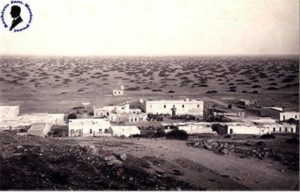
Editor’s note: The article by El Fadi et al. published on-line today by the Bulletin of the American Meteorological Society is literally a record-setting contribution to climatology. Co-author Chris Burt tells the story behind the story.
As any weather aficionado can avow, Earth’s most iconic weather record has long been the legendary all-time hottest temperature of 58°C (136.4°F) measured at El Azizia (many variant spellings), Libya on September 13, 1922. It is a figure that has been for meteorologists as Mt. Everest is for geographers. For the past 90 years, no place on Earth has come close to beating this reading from El Azizia, and for good reason–the record is simply not believable.
In early March 2010 I was included in an e-mail loop concerning questions about this record. The e-mail discussion participants at that time included Maximiliano Herrera, an Italian temperature researcher based in Bangkok; Piotr Djakow a Polish weather researcher; and Khalid Ibrahim El Fadli, director of the climate department at the Libyan National Meteorological Center (LNMC) in Tripoli.
Previous to this discussion I had generally considered the Libyan world record as acceptable although suspicious. The figure had been around for 90 years and two previous studies by Amilcare Fantoli (who was the man responsible for verifying the record in 1922) had more or less substantiated the extreme 58°C figure.
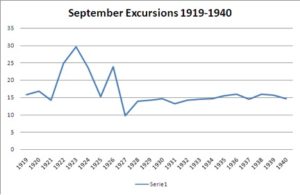
However, Piotr produced a chart of the monthly temperature amplitudes at Azizia for each September from 1921-1940 and this chart raised an alarm so far as the validity of the Aziza record was concerned. This was the first time that I began to really think something was not right about the record.
In September 2010 Internet weather provider Weather Underground, Inc., hired me as their ‘Weather Historian’ proposing that I write a weekly blog on extreme weather events and records.
I decided that one of my first blogs should be about the Azizia record. I was intrigued that El Fadli was skeptical of the Azizia 58°C figure and requested more data. El Fadli’s enthusiastic and gracious response (to provide all and any weather data I might be interested in) was beyond my expectations. Past experience had shown me that many national weather bureaus consider their data proprietary and/or subject to excessive fees for access.
With El Fadli’s data on hand and after researching all other references known (to me at the time) concerning the Azizia event, I posted a blog on wunderground.com reflecting my findings on October 3, 2010. I forwarded a copy of this to Dr. Randy Cerveny, a professor at Arizona State University (ASU) and co-Rapporteur of climate and weather extremes for the World Meteorological Organization (WMO).
At this point, Randy picked up the ball and created an ad-hoc evaluation committee for the World Meteorological Organization to evaluate the record for the WMO Archive of Weather and Climate Extremes (http://wmo.asu.edu/). After this positive response from Randy I asked El Fadli if Libya officially accepted the Azizia figure. He responded that they did not. Since records like this are, to a degree, the provenance of national interest and El Fadli responded that Libya did not officially accept the colonial-era data from Azizia (measured by Italian authorities at that time in Tripolitania) this became the catalyst to launch an official WMO investigation.
This would be an unprecedented investigation for this WMO extreme records evaluation committee. Rehashing old records is not the WMO Archive’s primary objective, which is to verify new potential records. As Dr. Tom Peterson of the US National Climate Data Center, President of the WMO’s Commission on Climatology of which the Archive is a part, put it, “To be honest, I was reluctant to reopen this question because other people had looked at the record in the past and it had been so widely accepted. I was particularly afraid that it would be an uncertain subjective opinion as to whether it was a bit off or not.”
Nevertheless, the investigation was approved and on February 8, 2011, Randy assembled a blue-ribbon international team of climate experts (eventually 13 atmospheric scientists in all). The official investigation began.
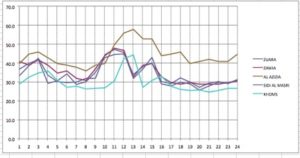
Amazingly, El Fadli had just uncovered a key document: the actual log sheet of the observations made at Azizia in September1922 (see illustration further below). The log sheet clearly illustrated that a change of observers had occurred (as was evidenced by the hand written script) on September 11, 1922, just two days prior to the ostensible record temperature of 58° on September 13th. Furthermore, the new observer had interchanged the Tmin columns with the Tmax columns. Also, beginning on September 11th the Azizia maximum daily temperature records began to exceed those at the four other stations reporting from northwest Libya (Tripolitania) by, on average, 7°C . That trend continued for the rest of the month (with a couple of days of missing data) and into October 1922.
Just as this key discovery (the finding of the original log sheet) was made, the Libyan revolution broke out. On February 15, 2011 we received the last message from El Fadli prior to the revolution. Col. Gaddafi, the leader of Libya, had shut down Libyan international communications.
Of course, without El Fadli’s
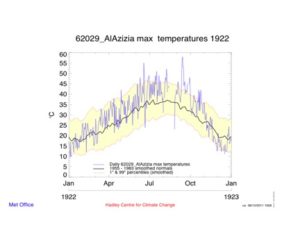
critical input we could move no further with the investigation and Randy called for a hiatus to further deliberations.
In early March Gaddafi began airing long nightly rambling tirades on his government TV network. During one of these he made an ominous reference to how NATO forces were using Libyan climate data to plan their assault on the country. My heart sank when I heard this. I immediately thought that our colleague, El Fadli, as director of the LNMC, must have been implicated by Gaddafi as providing weather information to the ‘enemy’.
I must say, at that point, I—and the rest of the committee—thought El Fadli was a dead man.
We didn’t hear again from El Fadli until August 2011 when the revolutionary forces closed in on Tripoli. One of our committee members, WMO chair of the Open Programme Area Group on Monitoring and Analysis of Climate Variability and Change, Dr. Manola Brunet, who knew El Fadli personally had up until then been unable to contact him by phone or email. Then on August 13, 2011 we received our first email from El Fadli.
El Fadli here relates the situation he faced during those long months when we lost communication with him:
During that critical time all communication systems in Libya were shut down by the regime so it was impossible to communicate with anyone, even inside the country. Mobile telephone communications were restricted and even local calls were controlled and monitored. What was amazing however, believe it or not, was that my office satellite internet connection was still up and running. But using such posed serious dangers, if anyone discovered me I would probably lose my life. Hence, I never used that connection. The first 3 months (February-May) I was able to reach my office (my home being about 5 km east of El Azizia and 40 km to my office in Tripoli) but then in May we suffered from short fuel supplies, electricity, and even cooking gas. You can imagine how difficult our lives became! The other serious story involved the security situation. When I borrowed a car belonging to the local United Nations office (since I had no fuel for my own car) I was driving to morning prayers (04:00 am) with my sons and suddenly we came under gunfire from the back and rear of the vehicle. The vehicle was struck as I drove at a crazy speed with our heads ducked low. Our life was spared by the grace of God. This happened in late July.

Then, as we all watched through the technology of television and internet, by September 2011, the dictator Gaddafi was gone … and El Fadli was back!
With the investigation back on track, committee members made further progress in October and November. Dr. David Parker of the U.K. Met Office did a reanalysis of surface conditions across the Libyan region for September 1922. The results displayed a significant departure (up to 6 sigmas) from what the temperature observed at Azizia was to what the reanalysis plotted for the area. This was a key discovery, using technology that had never been available in past investigations of the Libyan record.
Also, Philip Eden of the Royal Meteorological Society and others uncovered information concerning the unreliability of the Bellani-Six type of thermometer that had apparently been used at Azizia in September 1922. Of particular interest was how the slide within the thermometer casing was of a length equivalent to 7°C. It would be easy for an inexperienced observer to mistakenly read the top of the slide for the daily maximum temperature rather than correctly reading the bottom of such slide, a point that El Fadli made in a message to me early on in the investigation”.
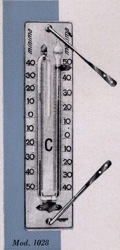
With all the pieces of the puzzle now falling into place a vote was taken in January 2012 resulting in a unanimous decision by the WMO committee members to disallow the Azizia record.
As Tom Peterson put it, “The eventual answer seemed so clear and obvious that we evidently must have done a far more in depth investigation than any earlier one.”
Based on that recommendation, Randy and Jose Luis Stella of Argentina, the WMO’s co-Rapporteurs of climate and weather extremes, have rejected the 58ºC temperature extreme measured at El Azizia in 1922. An important aspect of this long investigation was that it just isn’t climatologists and meteorologists changing their minds. It goes beyond that. This investigation demonstrates that, because of continued improvements in meteorology and climatology, researchers can now reanalyze past weather records in much more detail and with greater precision than ever before. The end result is an even better set of data for analysis of important global and regional questions involving climate change. Additionally, it shows the effectiveness of truly global cooperation and analysis. Consequently, the WMO assessment is that the official highest recorded surface temperature of 56.7°C (134°F) was measured on 10 July 1913 at Greenland Ranch (Death Valley) CA USA.
AMS Releases Revised Climate Change Statement
The American Meteorological Society today released an updated Statement on Climate Change (also available here in pdf form), replacing the 2007 version that was in effect. The informational statement is intended to provide a trustworthy, objective, and scientifically up-to-date explanation of scientific issues of concern to the public. The statement provides a brief overview of how and why global climate has changed in recent decades and will continue to change in the future. It is based on the peer-reviewed scientific literature and is consistent with the majority of current scientific understanding as expressed in assessments and reports from the Intergovernmental Panel on Climate Change, the U.S. National Academy of Sciences, and the U.S. Global Change Research Program.
“This statement is the result of hundreds of hours of work by many AMS members over the past year,” comments AMS Executive Director Keith Seitter. “It was a careful and thorough process with many stages of review, and one that included the opportunity for input from any AMS member before the draft was finalized.”
The AMS releases statements on a variety of scientific issues in the atmospheric and related sciences as a service to the public, policy makers, and the scientific community.
NOAA's "Weather Central" Settles into Its New Home

and kick off a move-in process that will continue through September as operations shift from the 40-year-old World Weather Building in Camp Springs, Maryland, NCEP Director (and current AMS President) Louis Uccellini decided to make a gesture to his predecessors who brought NOAA’s forecasting hub to this juncture. Here’s the commemorative email he sent, which was shared throughout NCEP:
Subject: Last email from the desk of the Director of NCEP at the World Weather BuildingDate: Wed, 01 Aug 2012 14:33:35 -0400From: Dr. Louis UccelliniTo: Ron McPherson, Bill Bonner, Jim Howcroft, Norm Phillip
Ron/Bill/Jim/Norm: Tradition has it that when the NCEP Director leaves his position and shuts the lights out for the last time in Room 100 at the World Weather Building (WWB), he/she leaves a hand written letter taped inside the top drawer of their desk for the next Director. But we have a unique situation as today marks the last day the Director of NCEP resides at the WWB as I will be moving to the new NOAA Center for Weather and Climate Prediction (NCWCP) tomorrow.
So I have decided to write this email to you, the former NCEP Directors (Bill Bonner, Ron McPherson), the Deputy Director (Jim Howcroft) and Norm Phillips, as the last correspondence, the very last email sent from this office.I have been reflecting on the history made in the WWB from 1974 to the present and understand that much of this would not have happened without you, the previous Directors (George Cressman and Fred Shuman), and the great people that you assembled to develop and implement real-time models that would ultimately access the global observing system and provide numerical predictions that would become the basis, the rock solid foundation, for how weather and climate forecasts are made.
David Laskin wrote about the WWB and NMC/NCEP in his 1996 book, “Braving the Elements: The Stormy History of American Weather” and stated:”… a nondescript building in the town of Camp Springs, Maryland, just a stones throw off the Capital Beltway. From the outside the place looks like one of those suburban “professional complexes” where dentists and insurance salespeople set up shop. The one clue that something special happens here is an inconspicuous sign over the entrance: World Weather Building. No marble columns. No uniformed guards. No eagle clutching lightning bolts, No model of the globe. And yet, despite the absence of visible symbols, this building is as critical to our nation’s weather as the Pentagon is to our defense. For this is the headquarters of the National Meteorological Center- the innermost nerve bundle of the central nervous system of the National Weather Service…..The National Meteorologic Center is where national weather comes into focus. All the maps you see in newspapers….all those long range outlooks they flash up on the Weather Channel: they all originate here. This is where the global networks converge; this is where the megacomputers are run; this is where the nation’s weather happens: the NMC is Weather Central.”
Quite a tribute to you during your time here and a recognition of the historic importance of the WWB. Yes, history was made at the WWB! Today we run a wide spectrum of climate and weather models: 1) from short-range climate to mesoscale severe weather events, 2) from space weather forecasts to Ocean and an increasing number of Bay Models (led by NOS), 3) from individual event driven hurricane, fire weather and dispersion models (led by OAR) to an increasing number of multi model ensemble systems; all involving a coupling of many components of the Earth System and fed by over 35 satellite systems (helped along by the Joint Center for Satellite Data Assimilation) and many synoptic and asynoptic insitu data systems. We now have all the Service Centers working off the same NAWIPS workstation environment and producing products collaboratively and interactively with other Centers and Weather Forecast offices around the country with a focus on extreme events that includes severe weather, fire weather, hurricanes, and winter storms. And the people in the WWB and throughout the rest of NCEP all played their critical roles to make this happen…..
This week starts the move of the operational and administrative units to the NOAA Center for Weather and Climate Prediction. NCO has been in the NCWCP since February and has done a masterful job in wiring the place up to meet our mission needs and is presently coordinating the move. So far it is all going as smoothly as we expected and our goal remains to move all the operational units without missing one product (Another mission impossible). I want to thank all of you … for helping make this building project a reality and sticking with us as we navigated our way through and around the unexpected challenges we had to confront to bring it to a successful conclusion. I especially want to recognize David Caldwell who was with me at the very first briefing on this project, worked every step through the planning and construction start up, and is still involved as we go through the check list.
So we are ready to move. I can tell you that the smiles on the faces of the employees leaving here and moving over to the NCWCP this week says it all. They are ready! And I also have to note that the people I met on a recent visit to the ECMWF (who looked at the pictures of the NCWCP) stated they were jealous as they looked around their older building. Nevertheless, we still have some work to do to catch up, which we will, as we settle into this modern stunning facility that we all can be proud of. Thanks to you all for your support during this 13 year saga. Some pictures are attached. From this point forward, you can find me at the NCWCP, Suite 4600.
Louis
Tropical Paradise at the Foot of the Rockies
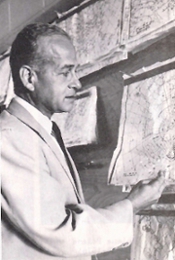
The July issue of BAMS features an article by John Lewis, Matthew Fearon, and Harold Klieforth on the legacy of Herbert Riehl, who has been known by his colleagues as “the father of tropical meteorology.”
For most of his career, the home base of Riehl’s great tropical legacy was not in the tropics, however, but first at the University of Chicago and then at Colorado State University, where he founded the Department of Atmospheric Science in 1962. Riehl had been eager to leave Chicago, where merger of departments represented a change to a philosophy less welcoming toward his traditional synoptic-based approach to meteorology. But he also cited personal reasons to want to resettle in Colorado: his daughter benefitted from the drier climate to recover from pneumonia. Riehl spent 1960-61 as a visiting professor in CSU’s civil engineering department, which he then joined initially before starting his own department.
The Department, which offers masters and doctoral degrees, has grown from an initial six faculty to nineteen today with academic and research programs in areas ranging from weather systems to climate dynamics to atmospheric chemistry.
This week (13-14 July 2012) the Department of Atmospheric Science at Colorado State University will celebrate its 50th anniversary with a conference, banquet, and open house in Fort Collins, Colorado. Information about the anniversary celebration, along with a timeline of historical events, can be found at http://www.atmos.colostate.edu/anniversary/anniversaryHistory.php.
The department’s 50th Anniversary Conference on July 13 will feature invited talks by alumni: Mark DeMaria, PhD ’83; Kevin Knupp, PhD ’85; Robert Rauber, PhD ’85; Steve Ackerman, PhD ’87; Thomas Peterson, PhD ’91; Susan van den Heever, PhD ’01; Timothy Lang, PhD ’01; Katherine Straub, PhD ’02; Kevin Gurney, PhD ’04; and Gavin McMeeking, PhD ’08. The luncheon program will be presented by Nolan Doesken, Colorado State Climatologist, and will be followed by a poster session featuring research by former and current students, staff, faculty, and friends of the Department. The 50th Anniversary Banquet in the evening will feature a presentation by alumnus James Fleming ’73, entitled “The Emergence of Atmospheric Science”. This presentation highlights the deep historical roots of atmospheric science — an interdisciplinary field that emerged in the 1960s at the confluence of new ideas, new technologies, and new ways of working together. As Dr. Fleming notes, “Standing on the shoulders of giants can be enlightening, fun — and sometimes risky.”
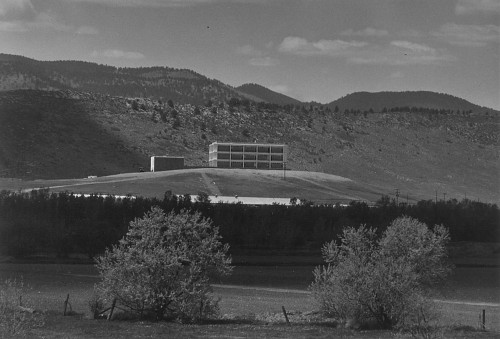
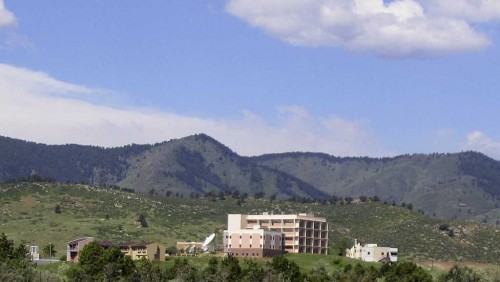
Facetime: It Works for Congress–and for Science, too
In an unseasonable lowering of temperatures last Thursday in Washington, D.C., both administration and Congress pulled back from catastrophic threats of furloughing thousands of National Weather Service employees this summer. The fact that NWS had defied Congress by reassigning funds to cover shortfalls no longer seems to be a reason to make the summer miserable for agency employees and the public. All parties involved are cooperating toward more measured solutions.
These days, any lowering of tensions in a politically explosive dispute is rare enough to warrant further investigation. In this case, it turns out there’s a physical cause behind the judicious political outcome. AMS Policy Program Director Bill Hooke trenchantly noted the significance of the location of the House of Representatives hearing at which Congress considered option of massive NWS furloughs: a “cramped, windowless room”, as reported by Government Executive. Hooke contrasted the intimacy of the setting with the “cavernous” hearing rooms one normally sees in televised proceedings on the Hill. He writes on his blog, Living on the Real World,
The former, more intimate settings force recognition by all parties that “we – those of us in this room – we’re in this together.” They encourage the behavior and actions apparently seen yesterday which balance fixing the problem as well as the blame.
It is ironic that at the very time when Congress resorts to the old-fashioned face-to-face method of communication to resolve a problem, some in Congress are moving to restrict scientists’ ability to communicate face to face. We’re referring to an amendment to the Postal Service Act that was approved by voice vote in the Senate in April stating, among other things, that
- government agencies would not be able to sponsor employees’ attendance at more than one conference per fiscal year sponsored by any given external organization
- presence at conference abroad would be limited to 50 (domestically-based) employees of any one agency
- funding for any single conference cannot exceed $500,000.
- Post online quarterly justification and itemizations of all conference spending.
- Post online all minutes, presentations, and other documentation of conferences attended by government employees.
Senator Tom Coburn of Oklahoma introduced the amendment (S.Amdt.2060) in response to recent revelations of seemingly lavish spending by the General Services Administration at a Las Vegas conference. Coburn and the amendment’s co-sponsors believe that there are abuses of the use of travel and conference funding throughout the Federal government and that transparency and limits will enable better oversight and reduce waste. Coburn’s office has been aiming to reduce conference expenditures to 80 percent of 2010 levels.
However, scientists and others say the proposed rules will do far more than limit excesses. Some organizations (including AMS) sponsor multiple specialized conferences, each of which appeals to different offices within single government agencies. Others have very large conferences (think the 20,000 plus attending the American Geophysical Union’s week-long Fall Meeting) that attract huge contingents of government scientists and educators for multiple days and presentations. The AGU, which urges its members to write to Congress, explains that
Government attendance at scientific meetings not only fosters collaboration and future partnerships between government scientists and academia and industry, but the collaboration and exchange of ideas also avoids duplicative scientific efforts and stimulates new concepts. While it is extremely important to eliminate wasteful government spending, Congress should consider ways to avoid excesses that will not also inadvertently damage the United States’ scientific enterprise.
Meanwhile this month the American Society of Association Executives sent an open letter to Congress to oppose the amendment. ASAE explained to its members,
while there may be a need for more transparency and oversight for government sponsored conferences and travel, there is a legitimate need for government employees to attend private educational conferences in order to work with the private sector on best practices and shaping public policy. Most members of Congress have understood and support this position….Senator Coburn’s office has indicated they are open to modifications, but they have not yet shared any amended language. In addition, in some meetings a few members of Congress have questioned why federal employees cannot participate in meetings through Skype or teleconference. We share with these offices the value of face-to-face meetings and how important in-person collaboration can be on so many issues, from food safety to national defense to low-income housing and many others.
Indeed, scientists—despite being stereotyped as non-communicators for years for staring at their feet when talking to nonscientists at parties and burying their heads in their computers in their offices–are actually very dependent on the face-to-face interactions at conferences, large and small. These days, e-mail and scientific journals help keep everyone up-to-date, but conferences are a chance to exchange ideas, form collaborations, and prevent larger wastes of effort, duplication, and fantastical hopes that can ensue when scientists hole up in their labs for too long. Science is a marketplace of ideas: pet theories can become blind alleys unless they are short-circuited by the dose of reality that a public presentation forces on investigators. In other cases the clash of opposing ideas festers unless face-to-face communication is possible, opening up opportunities for collaborative solutions. Conferences are much more than sitting in a room watching a presentation that could be delivered over the internet.
ASAE has a great tip-sheet on the value of meetings. It points out that in business, the health of companies depends on travel and personal interaction with clients. Given that science is the engine of innovation in an increasingly technologically dependent world, it’s safe to say that the nation’s long-term economic and environmental health will continue to need busy scientists–including government scientists–to get out of their offices and into conferences together.